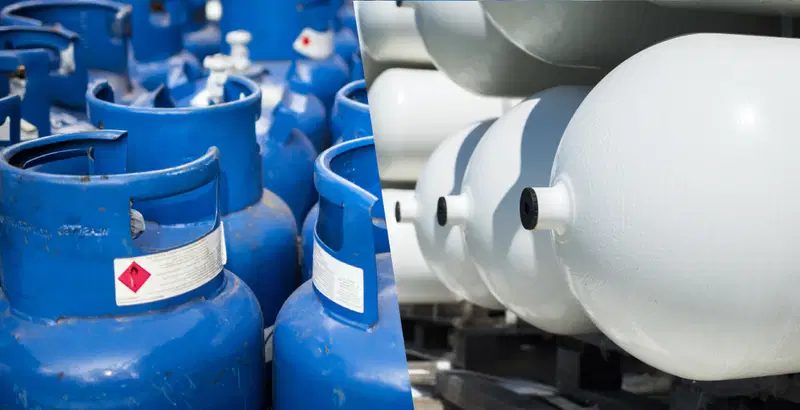Nigerians are currently at crossroads due to the rise in price of petrol and the ongoing crusade by the Government on converting vehicles from petrol-powered to CNG-powered.
To add to their dilemmas, an incident involving a CNG-powered vehicle occured in Edo state a week ago, and it raised concerns about the safety of the switch from petrol-powered cars to CNG.
However, during an interview on Channels TV’s Morning Brief, Engineer Samuel Ushe, Chief of Operations at the National Metrology Institute, explained key differences between Compressed Natural Gas (CNG) and Liquefied Petroleum Gas (LPG).
Both are widely used in Nigeria, but understanding their distinctions is vital for safety and efficiency.
Here are 5 differences between CNG and LPG
Composition
CNG is designed to store and transport compressed natural gas and consists mainly of methane, which is a natural gas as highlighted by Engineer Samuel Ushe
Methane is a cleaner-burning fuel, releasing fewer emissions compared to other fossil fuels, making it a preferred alternative in vehicles aiming to reduce carbon.
However, the primary components of LPG are propane and butane, which are leftovers from the processing of natural gas and the refining of oil. LPG uses lighter, less thick cylinders than CNG because of its lower pressure and less complicated storage needs; CNG’s high-pressure demands far more durable materials. These factors were addressed during the discussion of conversion safety concerns.
Storage State
CNG cylinders are designed to withstand the extremely high pressure needed to store methane, which can reach up to 300 bars. CNG cylinders come in various sizes, ranging from 5 liters to 90 liters, depending on the vehicle’s requirements.
LPG cylinders are more suitable for home uses like cooking because it is stored as a liquid at a considerably lower pressure (around 5–10 bars), in contrast to CNG. LPG cylinders are also available in various quantities like 5 kg and 50 kg.
In contrast to CNG cylinders, which are smooth and do not have welded joints, LPG cylinders may have welded joints
Energy Content
Compared to LPG, CNG has a lower energy density. This indicates that to produce the same amount of energy as LPG, more CNG is needed, and cars will need bigger storage tanks or more frequent refueling.
LPG is more energy-efficient per unit volume than CNG because it has a higher energy density. Because of its ability to produce greater energy from a lesser quantity of fuel, LPG is commonly used as an alternative fuel in some types of cars as well as for cooking and heating.
Cylinder Material
CNG cylinders are made from thicker, heavier materials like steel or composite materials to withstand high pressure. Using the wrong container will not be able to hold the high pressure that comes with CNG. The thickness of the material minimum is 12.7 millimeters.
LPG cylinders are lighter, usually made from steel or aluminum due to the lower pressure they are stored under, and the thickness of the material is just about 4.0 millimeters thickness.
Usage and Applications
Vehicles generally use compressed natural gas (CNG) as a cleaner option to gasoline and diesel and to address the rising cost of fuel, the Nigerian government is promoting the move from petrol-powered automobiles to CNG-powered cars. Since CNG is an economical and sustainable fuel, it is utilized in cars that have been converted to run-on natural gas.
LPG is more widely used in homes for cooking, like in gas stoves powered by LPG cylinders. LPG is also utilized as a heating fuel and occasionally as an automobile fuel. For these uses, its high energy level makes it effective, and its cylinders are a common sight in many Nigerian households.
President Bola Ahmed Tinubu, recently urged Nigerians to chose between buying Petrol at ₦1000 or CNG at ₦200, while also making known his plan to ensure that Filling Stations across Nigeria have CNG conversion outlets.


